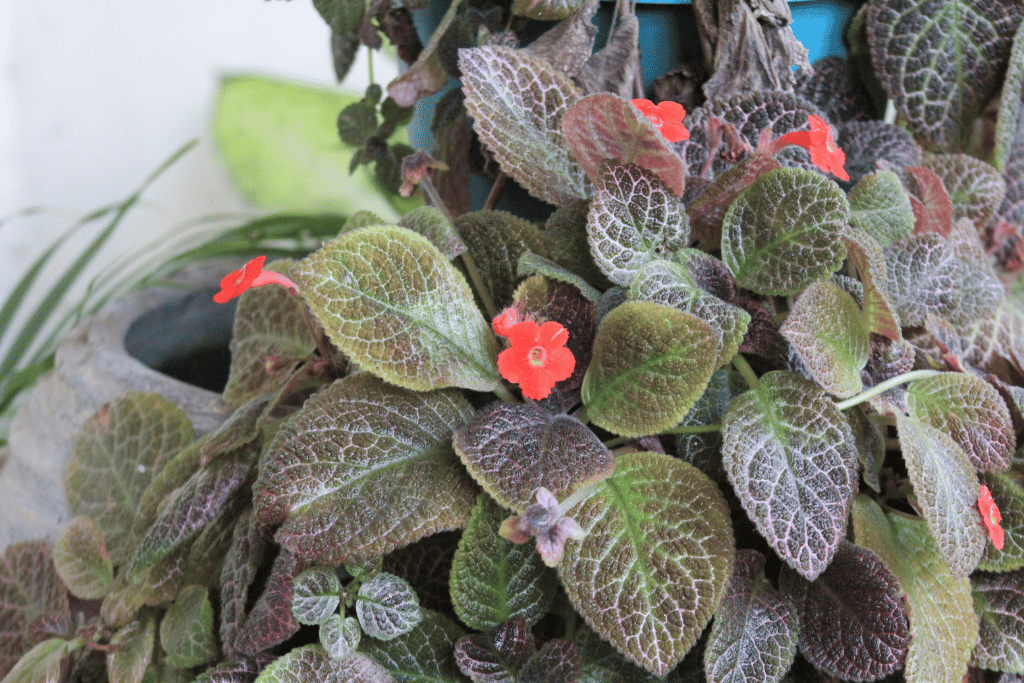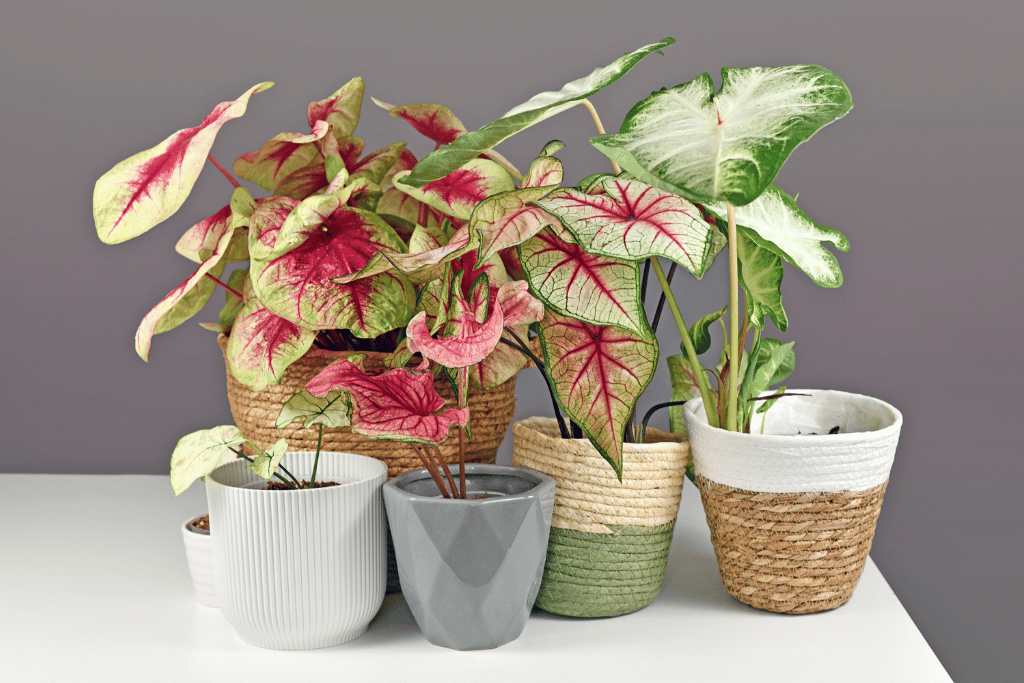
Would it be wrong to compare plant care with parenting? I don’t think so! Just like you wouldn’t pour a glass of milk over your baby’s head, you also shouldn’t pour water directly on any plant. Plant life is delicate and needs to be nurtured too – just like our little ones.
I’m a curious being, especially when it comes to exotic plants – plants like the angel plant.
And, one question that’s been on my mind lately is, do angel plants flower? Here’s what I can tell you about angel plant flowers.
These enchanting plants native to Central and South America have earned the honorable title of Angel plants due to their delicate foliage that looks like angel wings. Curiously, I wondered if such heavenly beings could produce flowers – and guess what? They can! Indeed, these charming plants do bloom with beautiful blossoms.
If you give Angel plants the necessary care and consideration, they will reward you with beautiful blossoms. Let’s take a look at how we can cultivate these stunning plants!
Angel Plant Varieties

Angel plants come in a variety of forms and sizes, but the angel wings plant and angel vine plant are perhaps two of the most recognizable. The angel wings have distinctive heart-shaped leaves with pointed tips, which can bloom small flowers if the environment is just right. In contrast, its counterpart – the angel vine – features lengthy stems sprouting round foliage that seem to dangle gracefully from its vines.
Do Angel Plants Flower?

Yes, Angel plants are known for their eye-catching and captivating flowers. Throughout the summer, these plants burst into life with vibrant blooms of pink or red — complete with striking white markings! These blossoms can linger for many weeks, creating an explosion of color in your garden that will last all season long.
Factors That Influence Flowering
Light and temperature are two essential elements that may determine if an angel plant develops blooms or not. The majority of these plants prefer to be in bright, indirect light; however, excessive direct sunlight can actually prevent flowering. Furthermore, certain varieties will only show buds when the temperature is between 60-75°F (15-24°C), such as with the angel wing species. With this knowledge in mind, you should have no problem enjoying a beautiful display from your angel plant!
Angel Plant Flower Care

To ensure your angel plant blooms and thrives, it is essential to water and fertilize regularly. Water when the soil has dried out a bit but be mindful of overwatering, as this can cause root rot which will prevent flowering.
To get those beautiful angel plant blooms, fertilize your plants every two to four weeks during the growing season (spring and summer) using a balanced, water-soluble fertilizer. To really maximize results, take some extra steps like removing dead flowers regularly and providing additional sunlight exposure for optimal flowering potential!
To speed up the flowering process, you may want to try manipulating its light and temperature settings as well as adding fertilizers which are specifically tailored for flowering. Fertilizers that boast high levels of phosphorus could be especially beneficial in stimulating flowers in Angel plants.
Common Issues With Angel Plant Flowering
With Angel plants, it’s common to run into issues. If your plant isn’t blooming, it’s important to look closely at the care routine and make any necessary adjustments. Oftentimes, this could be due to overwatering or inadequate light exposure. In addition, some varieties simply won’t produce flowers regardless of how much nurturing they receive. Before you give up on seeing any blossoms from your prized possession, do a bit of research into its specific variety – that can often provide insight as to why it may not be flowering.
Flowering Stages of the Angel Wing Plant

Flowering stage 1: The anticipation
The anticipation stage marks the initial step of your Angel plant’s blooming cycle. That is when you first recognize it beginning to generate flower buds — small bulges on its stems where flowers will shortly materialize. This phase can take anywhere from a few weeks to several months, depending on how this plant is taken care of and kept in its environment.
Flowering stage 2: The budding
During the budding stage, delicate petals unfold and form a unique shape that can linger for days or even weeks depending on how well you tend to your plants. Whether it’s warmth, water or light – nurturing your flowers will determine the length of their growth cycle.
As this stage progresses, your buds will begin to grow and become more prominent. It’s absolutely essential that you keep a close eye on your plant during this time period and ensure it receives ample amounts of both sunlight and water.
Flowering stage 3: The blooming
As we eagerly anticipate, the third stage finally arrives—the blooming stage. At this point, the Angel plant flowers reveal their exquisite beauty and charm as they open up for all to watch. Trust me when I say that it is worth every moment of anticipation!
As soon as the Angel plant flowers emerge, they present themselves in a tight cluster. But with time and maturity, they unfold their petals to reveal an array of striking colors ranging from dainty pinks and purples to vivid yellows and whites.
Flowering stage 4: The maintenance
Last but not least, the maintenance stage is where you’ll need to provide your Angel plant with the utmost care and attention. Staying consistent with its water and fertilizer requirements will be essential for keeping it blooming beautifully.
Keep your Angel plant well hydrated and fertilize it once a month during its growing season to keep it healthy. To maintain new growth, take some time to snip off any dead leaves or flowers as they appear.
Angel Plant Flowering Stages Table
| Stage | Description | Duration |
| 1. Anticipation | First notice of flower buds forming | Few weeks to few months |
| 2. Budding | Flower buds start to grow and take shape | Few days to few weeks |
| 3. Blooming | Flowers start to open up and show off their beauty | Few days to few weeks |
| 4. Maintenance | Take care of plant’s water and fertilizer needs, remove dead flowers or leaves | Ongoing |
Conclusion
With their charming cascading stems, exotic flowers, and amazing flowers, angel plants are one-of-a-kind. Even novice gardeners who don’t have a green thumb – can still grow these stunning plants with minimal care requirements. And now that you know the answer to: Do Angel plants flowers? It is time to start creating your own beautiful display of angel plant magnificence and bring life and beauty into your garden sanctuary.
Frequently Asked Questions (FAQ)
Why is my angel wing begonia not flowering?
If your angel wing begonia has been around for a while and you’re still waiting to see any flowers, don’t worry – there are several steps you can take to help promote flowering!
– For Angel wing begonias to flourish and showcase their blooms, they demand several hours of bright yet indirect sunlight each day.
Keep the soil hydrated, but not overly saturated. Leaving it to dry out between waterings can impede any budding blooms.
– To ensure your begonia stays in optimal condition, incorporate a balanced fertilizer such as 10-10-10 at half its strength into your plant’s life every two weeks during the growing season. Additionally, keep those flowers and leaves fresh by pinching off any damaged ones regularly! This will not only boost growth but also enhance blooming too.
How many times do begonias bloom?
Depending on its variety, a begonia’s blooming period may differ; however, generally speaking they can bloom from late spring to the initial frost. Angel-wing and wax varieties specifically are likely to present an array of hues in abundance–like pink, white, yellow or red–as long as given adequate sunlight and water. These flowers have the capacity for creating hundreds of petals throughout this season!
How do I make my begonia flowers bigger? (Pruning and pinching)
To create bigger and better blooms, regular pruning of begonias is a must. Grab sharp, clean scissors to snip away any dead or dying leaves and stems – careful not to cut into living tissue! This will promote healthy growth as well as more compact blossoms that won’t become lanky. Pruning your begonia regularly yields magnificent results every time!
– After the begonia has blossomed, pinching off its flowers will not only help keep it looking lush and full, but also facilitate bigger blooms by preventing over-flowering. This is a great trick to enhance your home garden!
Why do begonias have two different flowers?
Depending on the variety, begonias can produce two types of flowers. Some varieties contain both male and female reproductive organs so their flowers are usually more vibrant in color than varieties with a single type of flower. This is why some varieties can produce two types of flowers.



